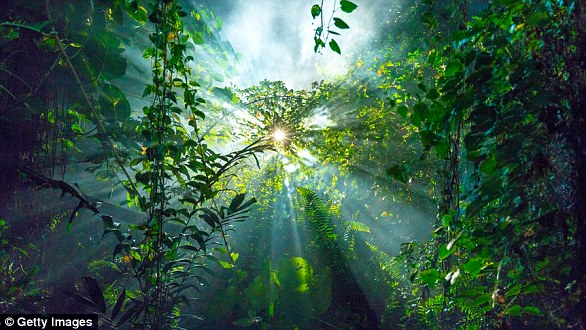A biologist has shared the heartwarming moment he found one of the rarest flowers in the world, breaking down in tears over the discovery.
Dr Chris Thorogood, associate professor of biology at the University of Oxford, had trekked day and night through the jungle to hunt for the incredibly rare Rafflesia hasseltii.
These elusive plants only grow in the tiger–patrolled jungles of West Sumatra, Indonesia and bloom for only a few days.
However, as Dr Thorogood revealed in a video, the emotional occasion proved to be too much for some of the assembled scientists.
Incredibly, the researchers had stumbled upon the exact moment that the flower finally opened after nine months of development.
As Dr Thorogood filmed, local conservationist and guide Septian Andriki broke down and wept at the sight of the rare flower.
‘It’s okay, we did it!’, Dr Thorogood says as he tries to comfort the crying biologist.
‘We found it, we found it, my friend.’
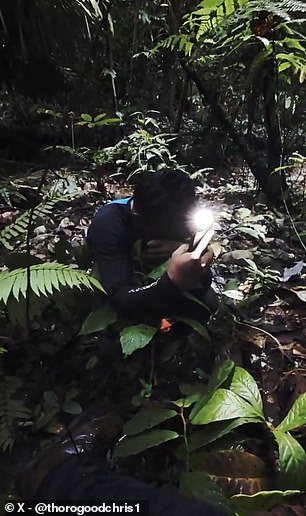
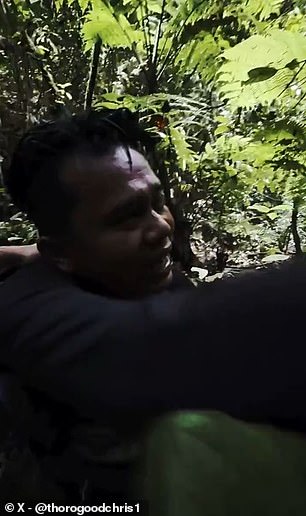
A biologist has shared the heartwarming moment that he found one of the world’s rarest plants in the Indonesian jungle, leaving his guide and fellow conservationist sobbing

Rafflesia arnoldi is a member of the Rafflesia family, which includes the world’s biggest flower (pictured) and are known as ‘corpse flowers’ due to their pungent smell
Rafflesia are a family of plants that are capable of growing the world’s largest flowers.
This includes the enormous Rafflesia arnoldi, which produces flowers measuring one metre (three feet) across and weighing up to 11 kilograms (24 lbs).
Sometimes known as ‘corpse flowers’, these alien–like plants get their morbid nickname from the overwhelming stench of rotting meat they are known to produce.
The plant uses this smell to lure flies and beetles into its cavernous flower so that it can spread its pollen across the dense rainforest.
However, even among this bizarre family, the Rafflesia hasseltii stands out as one of the strangest.
Known by its Indonesian name ‘Cendawan Muca Rimau’, meaning ‘Tiger–faced Mushroom’, this strange plant only grows in a remote stretch of West Sumatran rainforest that requires a special permit to enter.
Scientists say that the plant is so rare that it has been seen by more tigers than humans.
Dr Thorgood, Mr Adriki, and another local guide, Iwan Iswandi, had made the gruelling journey into the forest as part of a research and conservation mission.
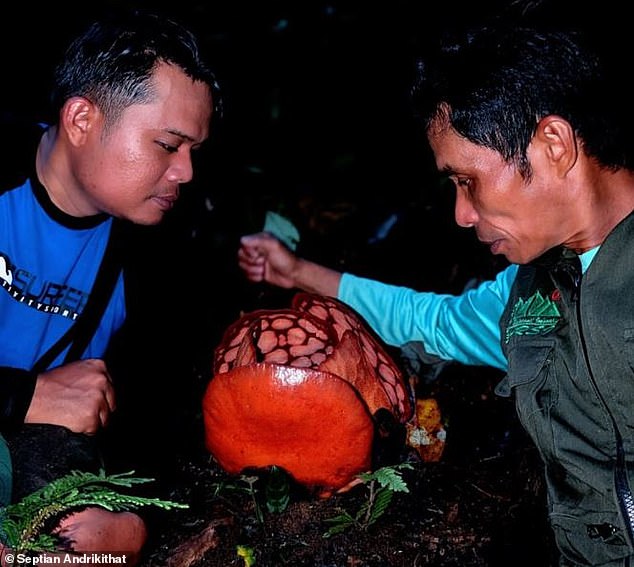
The researchers found an exceptionally rare specimen of Rafflesia hasseltii, known as the ‘Tiger–Face Mushroom’, which only blooms for a few days after nine months of development
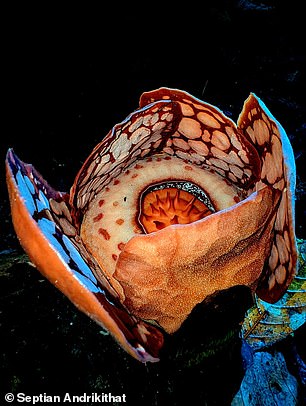

This strange plant only grows in a remote stretch of West Sumatran rainforest that requires a special permit to enter
Their goal was to find and study the Sumatra’s elusive Rafflesia plants, which are under mounting threat of extinction.
Researchers currently believe that 60 per cent of all Rafflesia species now face a severe risk of extinction and that 67 per cent of known habitats fall outside protected areas.
Discovering a Rafflesia hasseltii in bloom was an incredible achievement, but for Mr Adriki, who has spent the last 13 years searching for this rare flower, the moment was especially moving.
Dr Thorogood told Daily Mail: ‘Moments like this are electric. I think a combination of the tough trek and the extraordinary flower was what made it so moving for us.
‘Septian Andriki broke down in tears. Then, sitting quietly with the flower was otherworldly – it was like something sent from another planet.
‘It takes up to 9 months for the bud to develop, and it only opens for a few days – this one opened in front of our very eyes. So it’s like it opened specially for us.’
Dr Thorogood also stressed that the real ‘heroes’ were the local people, Mr Andriki and Mr Iswandi, who were able to track down the flower thanks to their excellent knowledge of the forest.
Meanwhile, science fans have flocked to social media to share their congratulations and support.
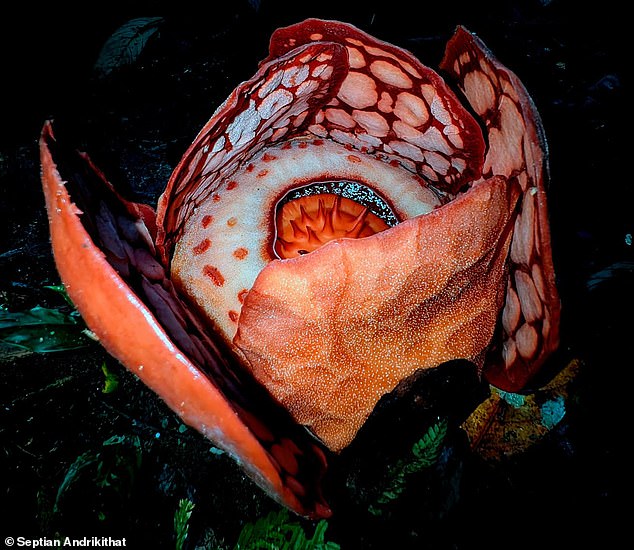
Scientists were looking for the Rafflessia hasseltii as part of an ongoing conservation effort. Currently, around 60 per cent of all Rafflesia species face a severe risk of extinction

On social media, science fans flocked to share their support for the conservationist’s emotional reactions. With one joking that they were crying just from watching the video

One excited commenter said that they had ‘shed a tear’ watching Mr Andrik finally see the plant he had hunted for over a decade

Another commenter called Mr Andrik a ‘wonderful person to be so in awe of nature that it moves him to tears’
One commenter wrote: ‘I’d be THAT emotional too if I were him. Heck, I’m only watching your video and tears streaming down my eyes.’
Another added: ‘What a wonderful person to be so in awe of nature that it moves him to tears. We could all do with a bit more of being awestruck.’
‘I’m so happy for this man and for your whole team that night,’ added another.
While one enthusiastic commenter wrote: ‘Surreal. Omg. So happy you have got to witness it. I’d cry too. Bawling, nah, I just shed a tear! My gosh! Sooo happy for you guys!’


